Q: “I am having knee problems and can’t bend my knees very deeply. But my legs are very week overall, especially my inner legs and I want to strengthen them. What poses do you recommend for strengthening my quads, my hamstrings, and my inner legs?”
A: The timing of this question could not be better, as I have already been thinking a lot about the health of our knees, one of the essential joints that allow us to walk upright. And so many of my students struggle with the same issue of limitation in bending (flexion) the knee joint. The underlying causes are varied, from wear and tear arthritis to a variety of injuries, especially meniscal tears and anterior cruciate ligament injuries, to other less common reasons.
However, regardless of why your knees might not be able to bend easily, the good news is that you can certainly do many poses that can help address the leg weakness that our reader would like to improve. Some of these poses can be performed reclining, others on hands and knees (I am going to assume that most readers can bend the knees safely to 90 degrees of flexion and can tolerate kneeling if using a blanket for padding), and still others standing. Today I am going to limit myself to more common poses that Nina and I are including in our list of YFHA recommended poses (something we are organizing for our upcoming immersion in August).
To start, as a way to start thinking about how yoga builds strength, you might want to take a moment and review my overview of strength Yoga for Strength: An Overview
Next, I’ll give you a few general guidelines. Generally, I suggest coming into and out of all of these poses with your breath for 6-8 rounds of dynamic movement, and then coming into the fullest version you can safely perform and holding the posture for a while, gradually working your way up to 90 seconds or so before releasing. In this way you will get both the dynamic effects of what are technically known as concentric and eccentric muscle contraction and the static effect of isometric muscle contraction, all of which will contribute to better overall strength of your targeted muscles.
Now let’s look at a few poses that you can do lying down, on all fours, or standing that can build strength in the front hip muscles, home to not only the quadriceps, but also the equally important psoas, the back hip muscles, the hamstrings, and the inner thigh muscles, the adductors.
Reclining Poses
Reclining Leg Lifts (Urdhva Prasarita Padasana). This pose builds strengths in the quads and psoas. You can do these leg lifts one leg at time or with both legs simultaneously. If you want to add in adductor strengthening, use a block between your thighs for the two-legged version. If you have a week or painful lower back, use caution with two-legged version if you have a weak or painful lower back.
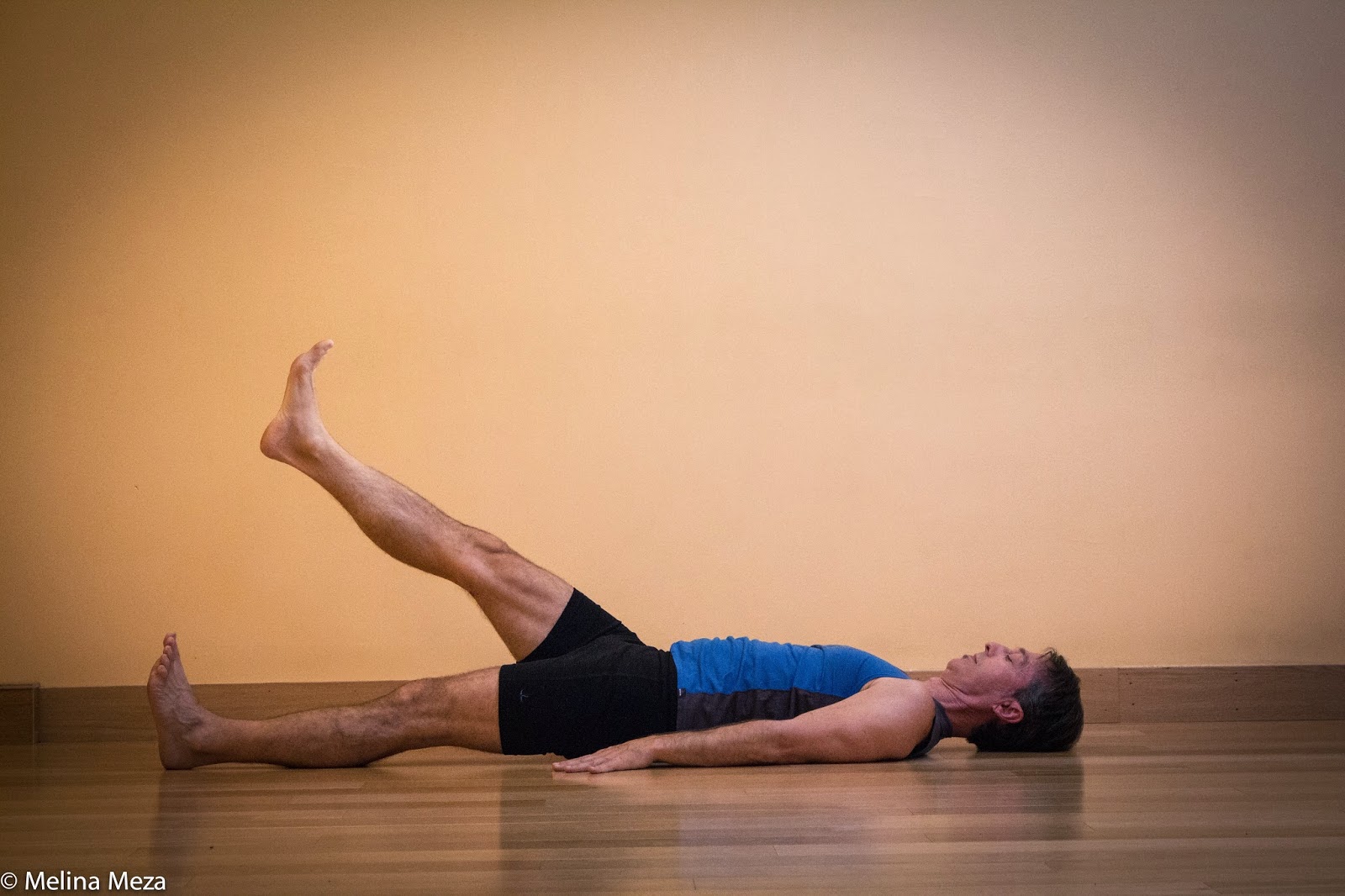
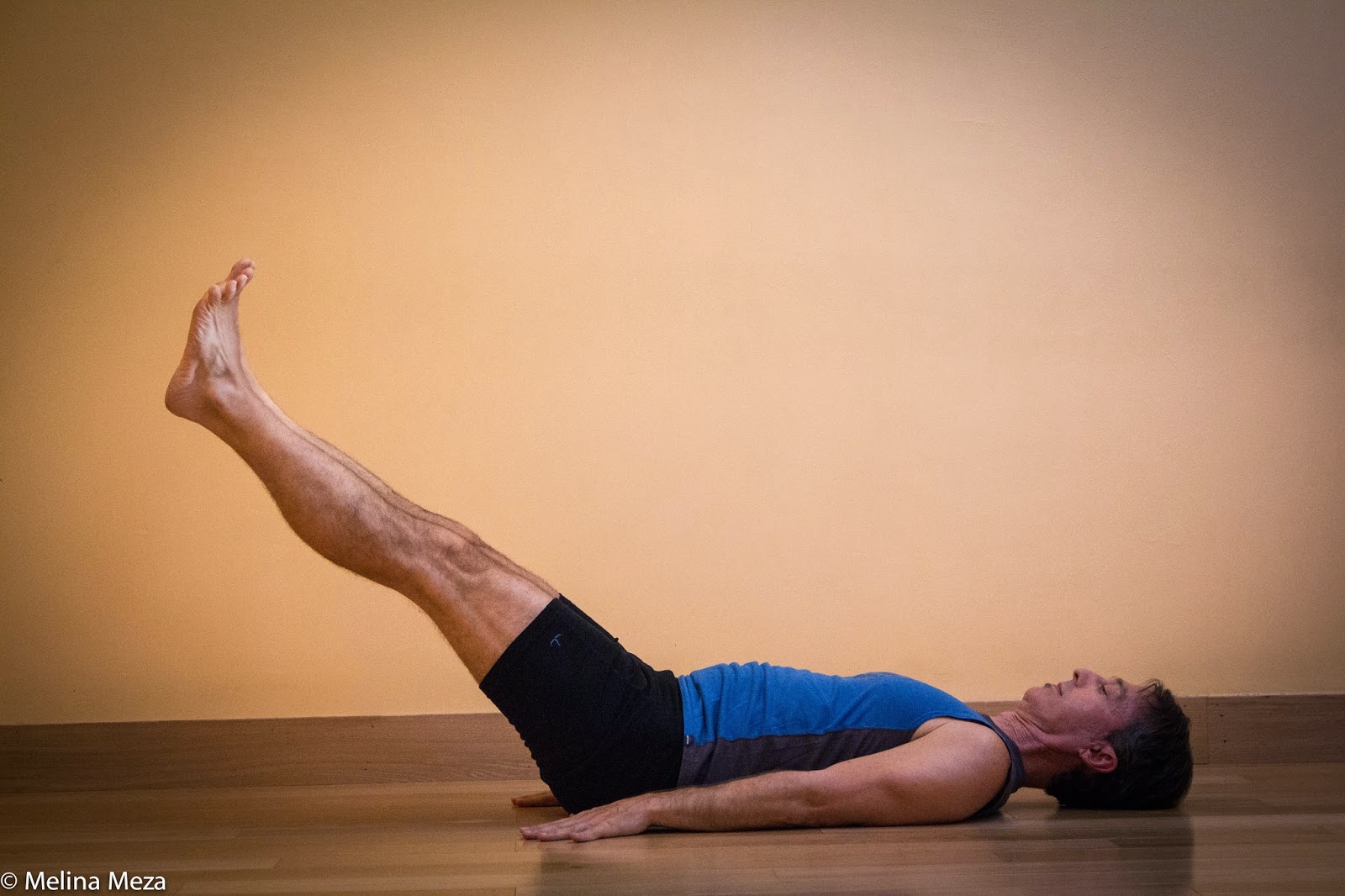
Locust (Salabhasana). This pose builds strength in hamstrings and back hip muscles. You can do Locust one leg up at time or with both legs simultaneously (see Featured Pose: Locust for basic instructions). For additional adductor strengthening in the two-legged version, you can squeeze a block between your thighs. This pose is generally safe for all, especially the one-legged version.
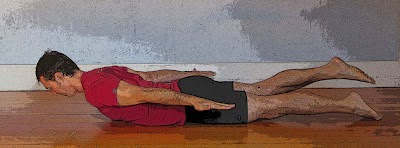
Bridge Pose (Setu Bandha). This pose another good hamstring and back hip muscles strengthener, and if you squeeze in a block between your thighs, you can add more adductor strengthening. If you have neck issues, be cautious about how high you lift into the backbend.

Poses on All Fours
Hunting Dog Pose. This pose strengthens the hamstrings and back hip muscles along with a whole bunch of other muscles as well. See Featured Pose: Hunting Dog basic instructions. I don’t usually do this pose dynamically, so let’s stick to having you hold it statically for at least 6 breaths on each side.
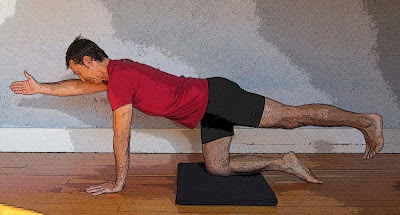
Downward-Facing Dog (Adho Mukha Svanasana). This pose strengthens the quads, psoas, and adductors—pretty much any version you do can help to strengthen the quads. If you start from Hands and Knees position, you can do a nice dynamic version, inhaling into a bit of the Cow position (see LINK), and then exhaling up into Downward Dog. Move back and forth from Hands and Knees pose to full Downward-Facing Dog a few times with your breath, before coming into the static version. In the static version, actively contract your quads (front thigh muscles) while you hold the pose. To work the adductors, once again, squeeze a block between your inner thighs. See Featured Pose: Downward-Facing Dog for basic instructions on the pose.
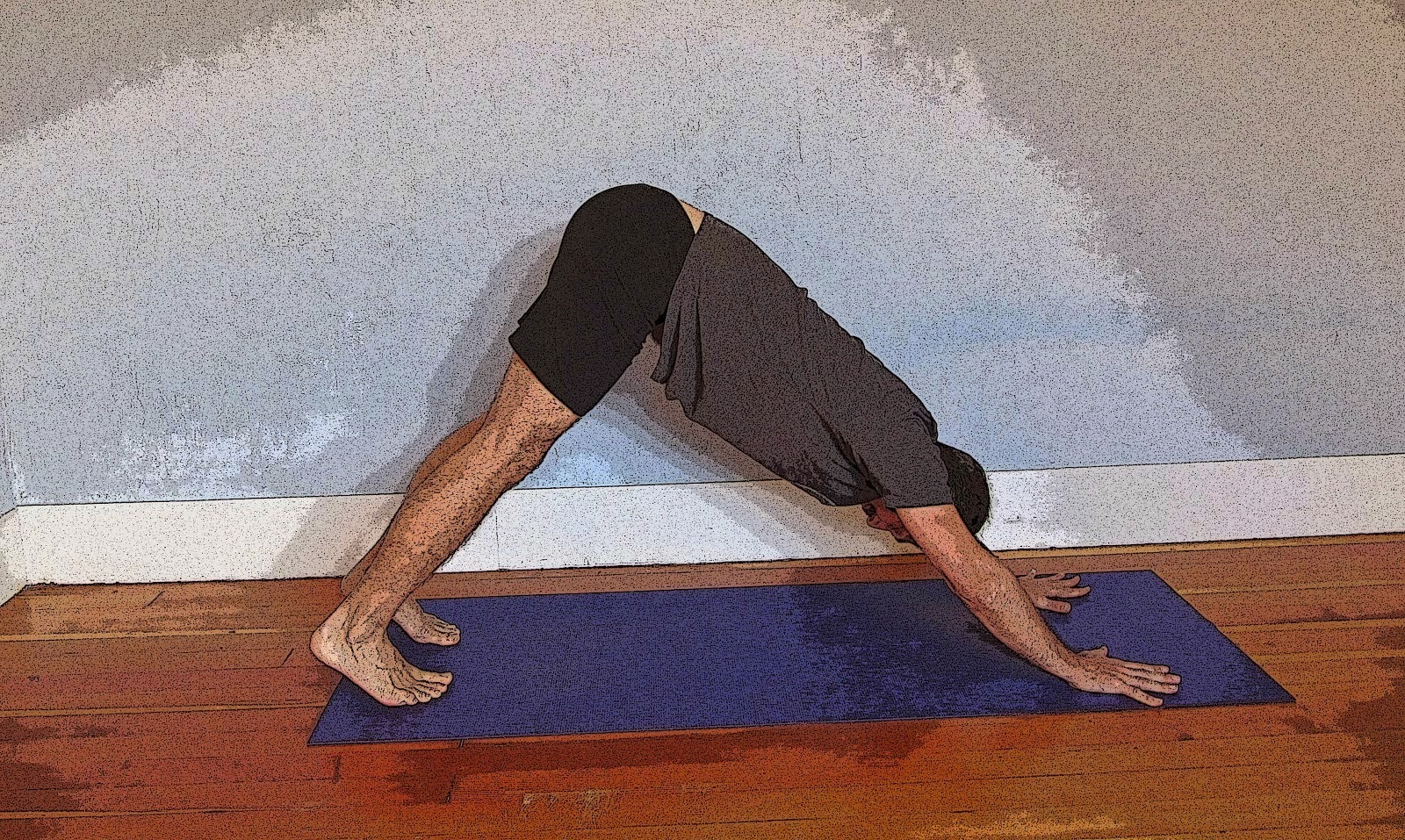
Standing Poses
Generally, practicing the following basic standing poses while engaging the muscles of your upper legs will building strength in the desired muscle groups:
- Mountain (Tadasana)
- Standing Forward Bend (Uttanasana)
- Powerful pose (Utkatasana)
- Warrior 1, 2, & 3 (Virabradrasana)
- Extended Side Angle pose (Utthita Parsvakonasana)
- Pyramid pose (Parsvottanasana)
- Wide-Legged Forward Bend (Prasarita Padottanasana)
Today, I will focus on just a few recommended standing poses.
Powerful Pose (Utkatasana). This pose strengthens the quads, psoas, and adductors. You can do this pose with or without a block between your thighs, but, as you are beginning to see, squeezing a block between your thighs in the poses helps to address the adductor muscles directly. And you do not need to bend the knees much to get some good results. You can also do this pose with your buttocks on a wall. See Featured Pose: Powerful Pose for basic instructions.
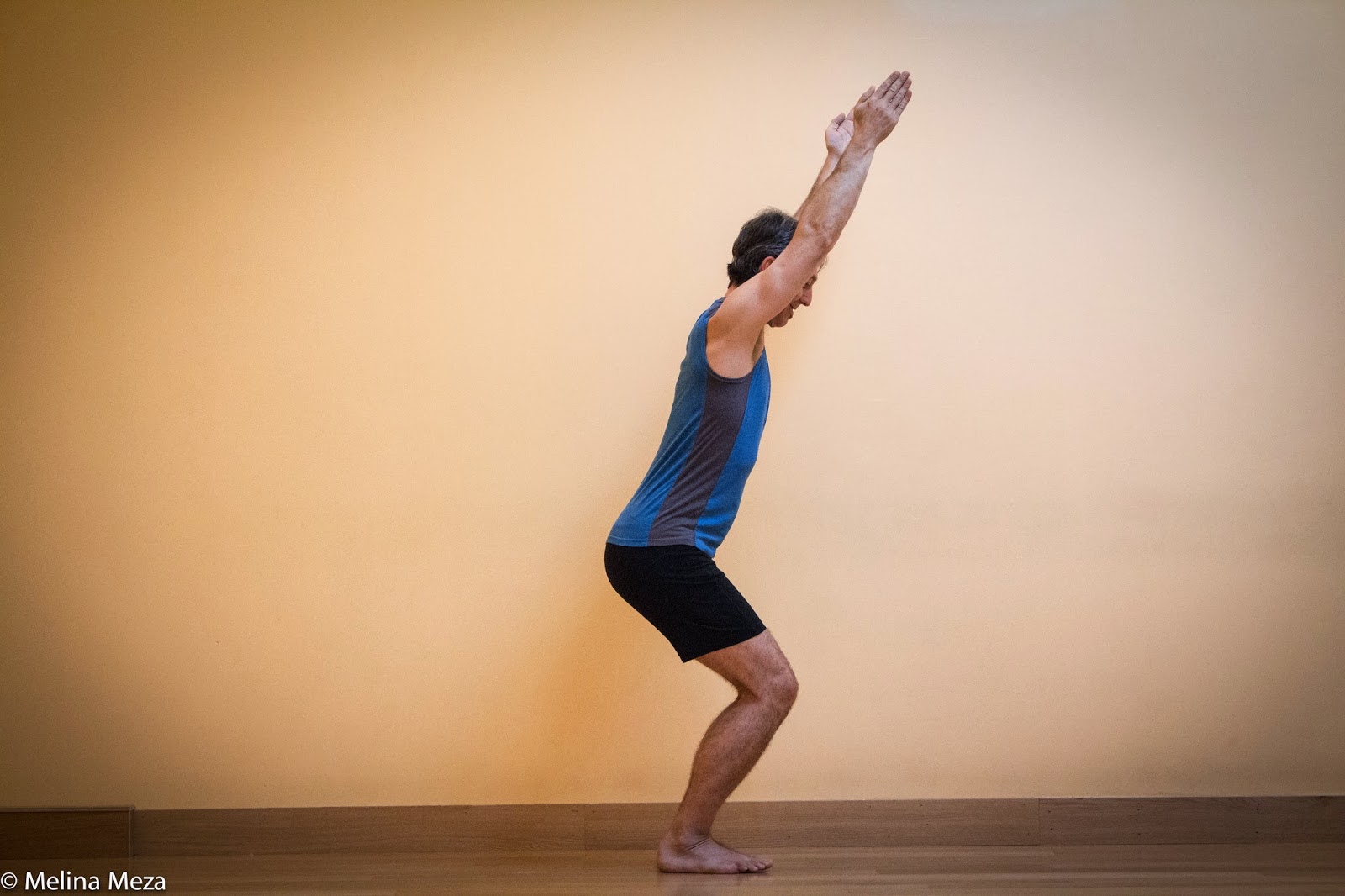
Warrior 3 (Virabhadrasana 3). This pose strengthens the hamstrings and back hip muscles. Your lifted back leg is where you will getting the most hamstring action, but you also will get a some quad strengthening in your supporting leg. If your balance is poor, consider doing a wall version with your hands on a wall in front of you. See Featured Pose: Warrior 3 and Featured Pose: Warrior 3 (Wall Version)for basic instructions.
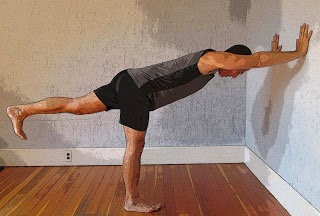
As you can see, there area lot of different poses to play with, so start by picking a handful that you can begin your journey with, and as you get better at those, add another one or two into your home practice. Try to practice every other day, allowing either a rest day in between or doing a more restorative practice on your strengthening “off” days. Don’t be surprised to find that the strength in your legs starts to improve rather quickly, despite your limited knee flexion ability!
—Baxter
Follow Yoga for Healthy Aging on Facebook ° To order Yoga for Healthy Aging: A Guide to Lifelong Well-Being, go to Amazon, Shambhala, Indie Bound or your local bookstore.


Leave A Comment